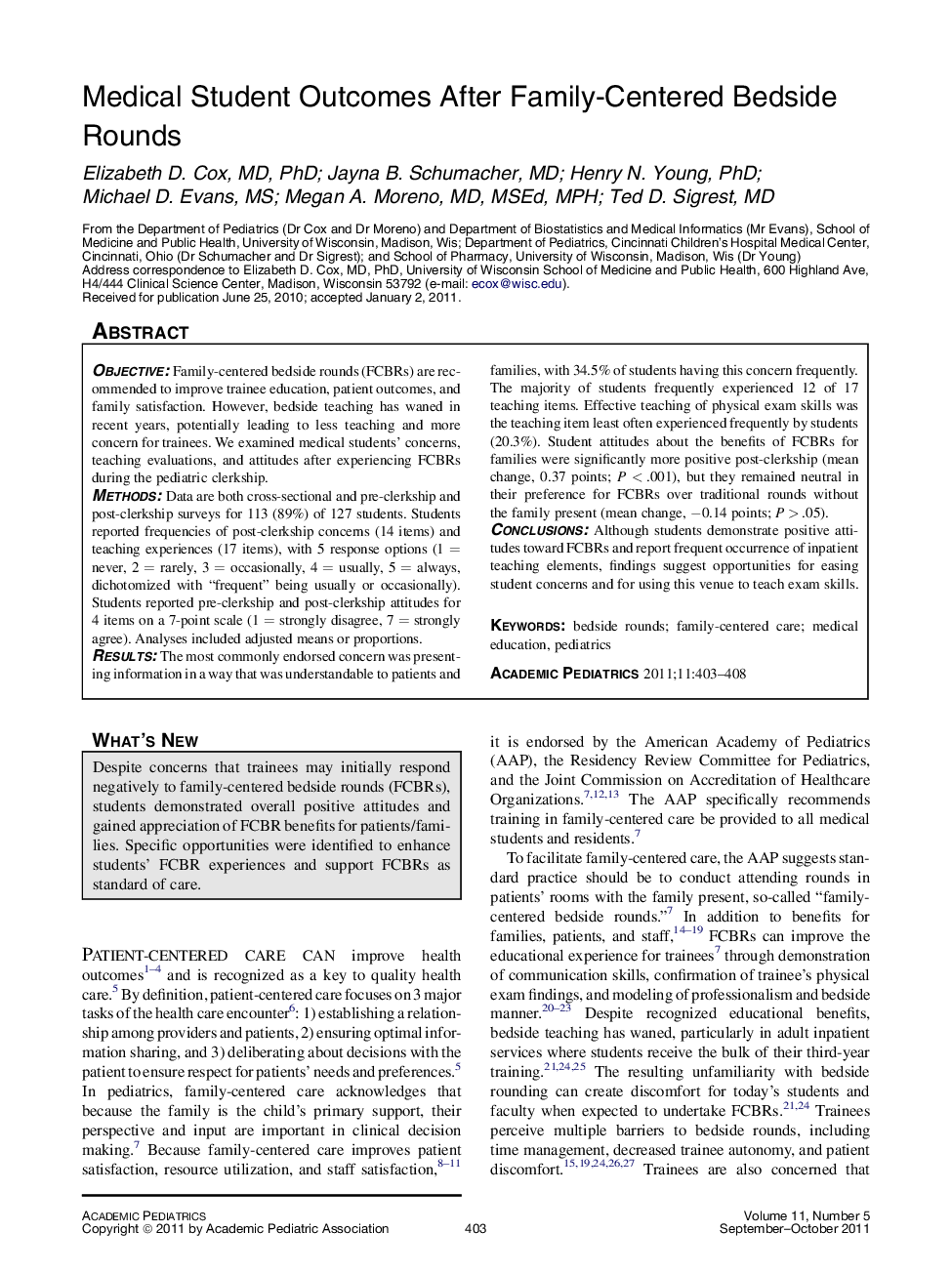| Article ID | Journal | Published Year | Pages | File Type |
|---|---|---|---|---|
| 4139948 | Academic Pediatrics | 2011 | 6 Pages |
ObjectiveFamily-centered bedside rounds (FCBRs) are recommended to improve trainee education, patient outcomes, and family satisfaction. However, bedside teaching has waned in recent years, potentially leading to less teaching and more concern for trainees. We examined medical students' concerns, teaching evaluations, and attitudes after experiencing FCBRs during the pediatric clerkship.MethodsData are both cross-sectional and pre-clerkship and post-clerkship surveys for 113 (89%) of 127 students. Students reported frequencies of post-clerkship concerns (14 items) and teaching experiences (17 items), with 5 response options (1 = never, 2 = rarely, 3 = occasionally, 4 = usually, 5 = always, dichotomized with “frequent” being usually or occasionally). Students reported pre-clerkship and post-clerkship attitudes for 4 items on a 7-point scale (1 = strongly disagree, 7 = strongly agree). Analyses included adjusted means or proportions.ResultsThe most commonly endorsed concern was presenting information in a way that was understandable to patients and families, with 34.5% of students having this concern frequently. The majority of students frequently experienced 12 of 17 teaching items. Effective teaching of physical exam skills was the teaching item least often experienced frequently by students (20.3%). Student attitudes about the benefits of FCBRs for families were significantly more positive post-clerkship (mean change, 0.37 points; P < .001), but they remained neutral in their preference for FCBRs over traditional rounds without the family present (mean change, −0.14 points; P > .05).ConclusionsAlthough students demonstrate positive attitudes toward FCBRs and report frequent occurrence of inpatient teaching elements, findings suggest opportunities for easing student concerns and for using this venue to teach exam skills.
